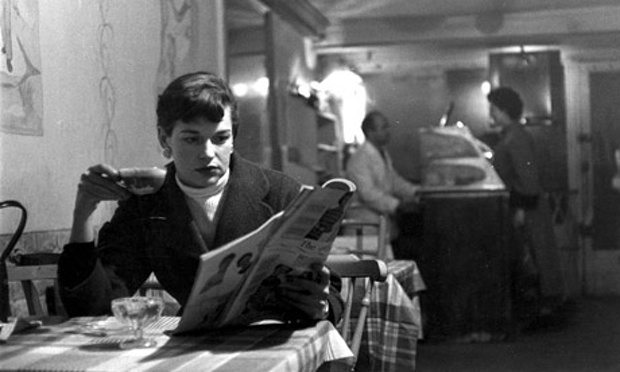
History of Fashion Week
Jump to:
New York | London | Milan | Paris
Essentially, there are 3 ways of interpreting when each “fashion week” began.
• When fashion shows began to become clustered at a certain time of year
• When the words “fashion week” began being used to describe these events (in the English-speaking capitals)
• When an organization stepped in and began organizing some — or all — of these shows
Let’s take a look at these one-by-one. And because this is a big topic, please know we value your corrections and suggestions.
New York Fashion Week (1943)
According to William Leach’s Land of Desire, America’s first fashion show was likely held in 1903, at a New York City specialty store called Ehrich Brothers. By the 1920s, shows had already gone mainstream, mainly held at department stores and hotels.
In 1903, a New York City specialty store held what was likely the USA’s first fashion show.
In 1943,* fashion super-publicist Eleanor Lambert decided to cluster these shows into a particular time frame, called alternately “Fashion Press Week” and “Press Week.” (For a great history of Eleanor Lambert, see the book Eleanor Lambert: Still Here, by John Tiffany.) The idea was to cluster the shows together to boost American fashion during the occupation of France.

(*Small note for the obsessed: You may note the above clipping from the Indian Valley Register of February 1951 announces the “16th Annual” Press Week of New York … which would put the first show date at 1935! Apparently “annual” should have meant “seasonal,” which would, indeed, put the first “Press Week” at 1943.)
In 1943, New York shows were clustered together to boost American fashion during the occupation of France.
The shows were organized into a particular time, but not yet a particular place.
The first time New York’s shows were consolidated in a single location took place in 1993, under Fern Mallis, then Executive Director of the Council of Fashion Designers of America (an organization founded by Eleanor Lambert). Even then, the events weren’t branded “New York Fashion Week.” They were called “7th on Sixth,” after the “7th on Sixth” event management company founded by the CFDA.
In 1993, the events were first brought together in one location as “7th on Sixth.”
(Meanwhile, it’s worth noting that London Fashion Week, including the actual words “Fashion Week,” had already been going strong in the UK since 1984.)
In 2001, “7th on Sixth” was sold to IMG, and in 2004, Olympus became title sponsor, and the events were known as “Olympus Fashion Week.” In 2007, Mercedes-Benz became title sponsor, and the events became known as “Mercedes-Benz Fashion Week.”
NY’s events have held names like “Olympus Fashion Week” and “Mercedes-Benz Fashion Week New York.”
Today, IMG’s shows are known as “New York Fashion Week: The Shows,” and still represent roughly 1/3 of the total New York Fashion Week schedule.
Today’s IMG’s shows comprise nearly 1/3 of the total New York Fashion Week schedule.
NYFW Best “Founded By” Date: 1943
• 1943 – Seasonally clustered (under the New York Dress Institute)
• 1990s – Began being called “New York Fashion Week,” following the lead of “London Fashion Week”
• 1993 – Organizationally grouped by the CFDA as “7th on Sixth”
NYFW Today
Shows are still grouped seasonally, but organized by a variety of producers.
London Fashion Week (1984)
London Fashion Week was the first English-speaking series of events to use the term “Fashion Week,” beginning in 1984.
The history of London Fashion Week is a bit more clear-cut than the rest. Events were originally organized by the British Fashion Council, who still organize the events today.
London was also the first fashion week to stream their events live for a worldwide audience, in Spring 2010.
LFW Best “Founded By” Date: 1984
• 1984 – Seasonally clustered by the British Fashion Council
• 1984 – Began being called “London Fashion Week”
• 1984 – Organizationally grouped by the British Fashion Council
LFW Today
Shows are still held primarily by the British Fashion Council.
Milan Fashion Week (1958)
Milan’s “fashion week” (technically “settimana della moda”) is also a bit nebulous at present.
Most events are organized under the auspices of the National Chamber for Italian Fashion (Camera Nazionale della Moda Italiana), founded in 1958. But some of the largest design houses — such as Dolce & Gabbana and Gucci — show outside of Camera Moda.
MFW Best “Founded By” Date: 1958
• 1958 – Seasonally clustered by Camera Moda
• 1958 – Organizationally grouped by Camera Moda
MFW Today
While many shows appear under the auspices of the Chamber for Italian Fashion, many of the largest names (such as Dolce & Gabbana) show independently.
Paris Fashion Week (1945)
Unlike the other fashion capitals, there are actually two “fashion weeks” in Paris (if you don’t count the menswear shows). The “haute couture” (high fashion) shows and the “prêt-à-porter” (ready to wear) shows.

Haute couture shows have been held in Paris since at least 1945, when the Chambre Syndicale de la Haute Couture required couture houses to present a collection of at least 35 runs to the press, with both daytime and evening wear. (You can read a fascinating comparison of Paris shows past and present, by Katherine Whitehorn — erstwhile fashion editor for UK’s The Observer — here).
But the more organized “semaine de la mode” that we know today was put together by the French Fashion Federation (Fédération Française de la Couture) in 1973, and held originally at Versailles Palace.
Today the Federation oversees the main Paris Fashion Week calendar, and awards accreditation. It’s worth noting, however, that there are various independent events during Paris Fashion Week, as well.
However, these are not legally part of FHCM’s official Paris Fashion Week schedule, and can only be said to occur during Paris Fashion Week.
PFW Best “Founded By” Date: 1945
• 1945 – Seasonally clustered by the Chambre Syndicale de la Haute Couture
• 1973 – Organizationally grouped by French Fashion Federation
PFW Today
All official Paris Fashion Week shows are held by the FHCM. All others are said to occur during Paris Fashion Week.
We hope you enjoyed this overview, aimed at taking a bit of the mystery out of the “how and why” of the “Big 4” fashion weeks.
##
Please Note: This article represents our best parsing of this complicated history to date, based on somewhat exhaustive — or maybe just exhausting — research. Please contact us with any corrections, addenda or other historical tidbits.
Related:
When is Fashion Week? | Fashion Week Calendar
With love,
FWO


